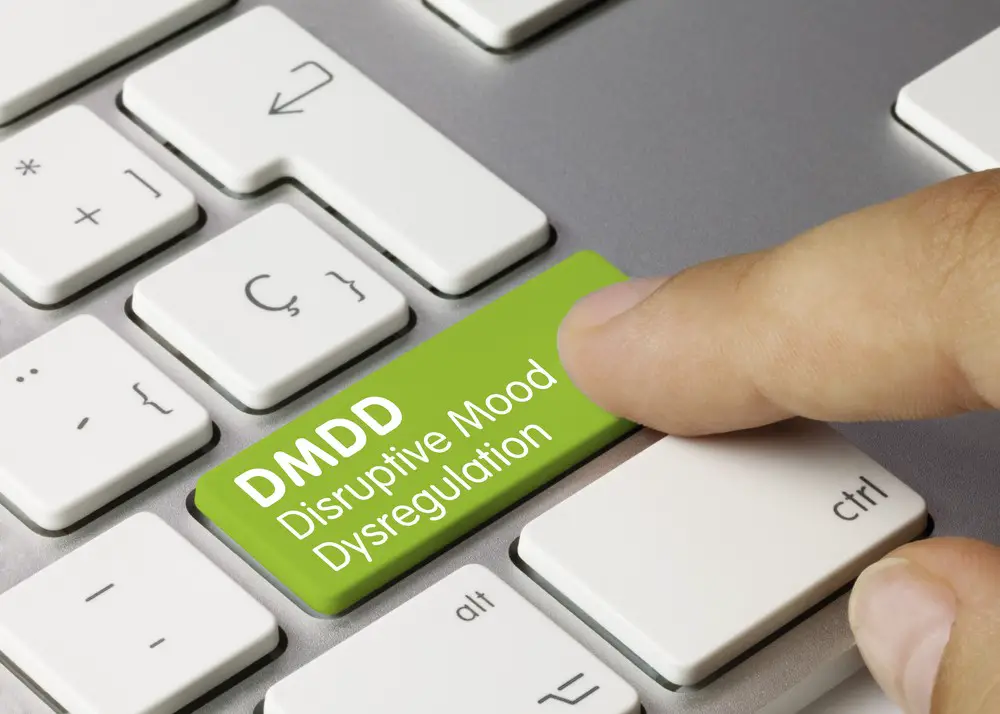Temper tantrums are normal for kids. However, children with DMDD have extreme anger outbursts, often over minor issues, indicating they cannot control their emotions. Compared to other kids their age, the symptoms are severe.
Disruptive mood dysregulation disorder (DMDD) remains a relatively new diagnosis since it was first published in the Diagnostic and Statistical Manual (Edition 5) in 2013. Despite causing some controversy, its addition was necessary for distinguishing it from children’s bipolar disorder (something which children were often incorrectly diagnosed with despite not having its symptoms).
As a parent, it’s essential to know the symptoms of DMDD in children, its diagnosis, and treatment. DMDD causes significant challenges and disruptions to your child. Still, with the appropriate treatment, you can help your child improve their relationship with you and all the other people they associate with at school and socially.
Symptoms of DMDD
The National Health Institute of Mental Health lists symptoms of DMDD in children. These symptoms include:
· Recurrent, severe temper tantrums that occur often (on average, three or more times weekly). These may include yelling, hitting, pushing, and property destruction.
· The outbursts have persisted for at least a year.
· Tantrums are not proportionate to the situation or their age – for example, your child may have a verbal outburst or physical aggression because you refused to buy them a toy, or your 10-year-old falls to the floor and screams like a toddler.
· Your child’s anger and irritability persist throughout the day on most days, even between tantrums.
· Temper outbursts happen in multiple locations, for example, at home, school, or when they are with their friends.
· The irritability inhibits your child from functioning properly in all spheres of their daily routine, including at home, school, and socially. You may notice they have trouble coping at school, socially, and in team sports. The child cannot maintain a healthy relationship with anyone, including family.
In addition, children with DMDD must present the symptoms for at least a year. If there is a break in the symptoms, it must last less than three months. Furthermore, DMDD usually appears before age ten but cannot be diagnosed before age six because tantrums are normal before that age.
Children with DMDD may experience fewer tantrums as they grow but show increased anxiety and depression.

Diagnosing DMDD
Seeking diagnosis and treatment is vital if you think your child has DMDD. Keep a file with the information to present to your child’s pediatrician, making it easier to evaluate and help clarify if there are other underlying problems linked to the child’s development or even substance abuse.
The symptoms of DMDD often concur with children’s irritability with other disorders, including attention deficit hyperactivity disorder (ADHD) and anxiety disorders. You’ll get a referral you’re your doctor to a pediatric mental health professional for an accurate diagnosis followed by effective treatment.
Is DMDD Common?
As a new condition, there is still not enough data on the prevalence of DMDD in children. However, we read in Very Well Mind of a three-month study of about 3,200 participants between the ages of 2 and 17. Depending on applying exclusion criteria, the study indicated it might be between 0.8% and 3.3%.
What Causes DMDD in Children?
The causes of DMDD are still unclear. However, genetics, childhood experiences, temperament, and other mental health conditions could increase a child’s risk factors. DMDD usually appears in earlier childhood and seems to co-occur with depressive disorder or oppositional defiant disorder.
Other risk factors are reduced parental support, family conflict, parental substance abuse or hostility, and disciplinary problems at the school level.
DMDD Treatment
As a newly classified disorder, research into effective treatments for DMDD in children is ongoing. However, that doesn’t mean your child cannot get help to alleviate the condition’s symptoms. The sooner you get help for your child, the better to help alleviate the moodiness, irritability, anger, and outbursts that damage their relationship with everyone around them.
Therapists base their treatments on what works for ADHD and oppositional defiant disorder since they share the same symptoms as DMDD. Therefore, you can expect your child to have either a combination of psychotherapy and medication or one of the two.
1. Psychotherapy
Cognitive behavioral therapy (CBT) helps children and teens learn how to respond to different situations by recognizing the thoughts and feelings contributing to their behavior.
Parent training helps teach parents or caregivers how to effectively respond during outbursts or anticipate them, helping to avert them. In addition, parents learn the significance of predictability, consistency, and rewards for positive behavior.
2. Medication
Ongoing research will help determine the most effective medication for treating DMDD in children. Doctors or psychiatrists prescribe stimulants, antipsychotics, mood stabilizers, or antidepressants to treat more severe symptoms in children.
Many doctors feel that prescribing stimulants and antidepressants could worsen the symptoms, but early research shows they are often effective.
3. Others
Researchers are studying how dialectical behavior therapy for children (DBT-C) can help children with DMDD regulate their moods and emotions by learning specific skills.
Scientists are also in the early phases of studying ways to leverage computer- or mobile-based training to help alleviate the symptoms.
Tips for Coping with DMDD in Children

During that intense moment when a child has a fierce temper outburst, parents and givers often don’t know how to handle the child. Follow these coping strategies to help your child in what’s a challenging time for both:
Understand the triggers – Certain places or situations can trigger a tantrum. It’s best to have a plan to remove your child from the problem because it has proven to help.
Ensure the child’s safety – Some children physically show anger by throwing things around. Therefore, keep your home safe by removing dangerous objects like heavy vases, sharp knives, etc.
Encourage coping skills – One case study showed that teaching the child to inwardly recite a song or rhyme combined with deep breathing when angry can intersect and stop the outbursts.
Reward positive behavior – Children need praise when they behave well. Often children misbehave to get attention in multi-child homes because they don’t get noticed when they act well. Therefore, it helps to pay attention to each child and reward them with the praise and privileges they deserve.
Final Take
Children with DMDD face challenging conditions that upset them and those around them. Therefore, seeking a diagnosis and treatment is essential to help them manage and improve their relationships with others.
FAQs
- Overcoming an Addiction & Dealing With Stress: A Step-By-Step Guide - February 18, 2024
- How to Achieve Better Sleep by Blocking Blue Light Exposure - February 18, 2024
- Best Tea for Sleep: Top Choices to Help You Drift Off Naturally - February 17, 2024
This site contains affiliate links to products. We will receive a commission for purchases made through these links.




